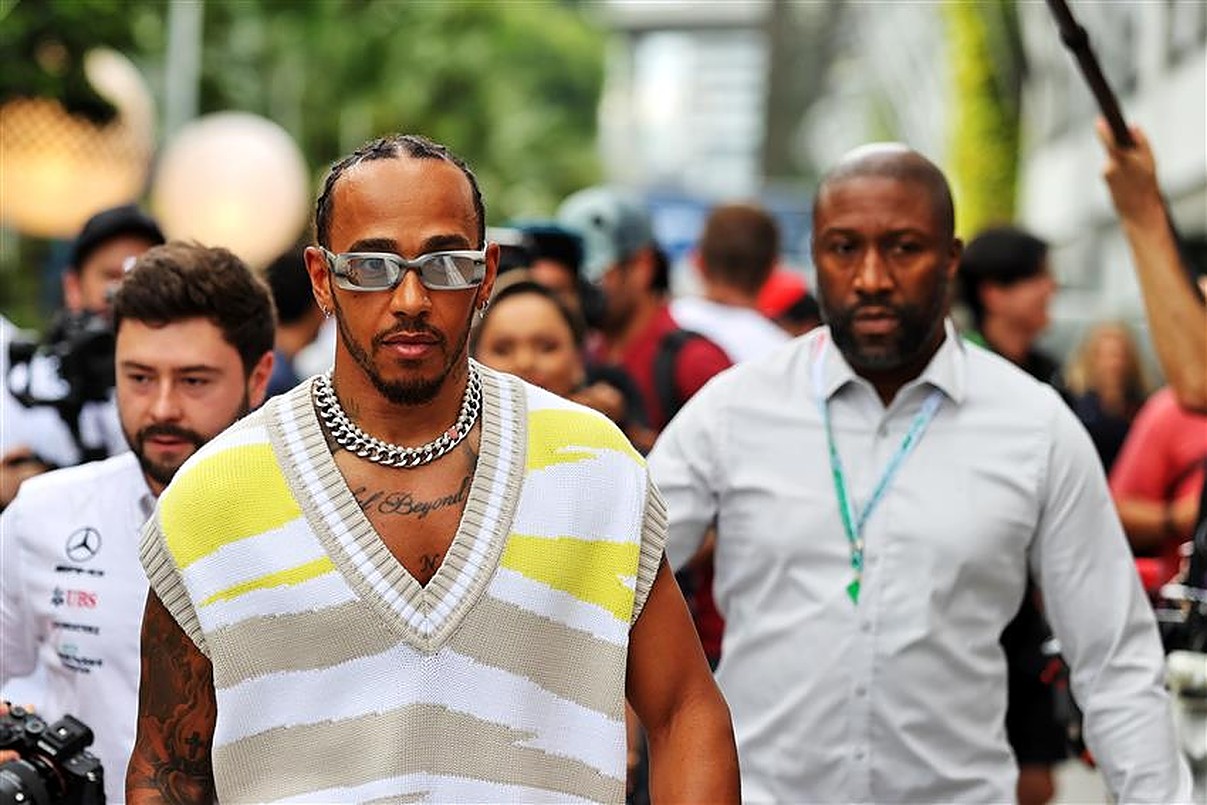Sir Lewis Hamilton has avoided any punishment for his nose stud being in during qualifying for the Singapore Grand Prix.
The jewellery debate has been raging for much of the season so far, with regulations prohibiting the wearing of metallic artefacts in the car having been introduced as far back as 2005.
It has since taken 17 years for that law to be enforced, and during that time, Hamilton has been wearing piercings in the car throughout his career.
However, when Mohammed ben Sulayem was elected FIA president, he wanted to take a harsher stance against jewellery being worn in the cockpit, as it poses a potential safety risk.

READ: Ferrari demand punishment for Red Bull and Max Verstappen if cheating confirmed
Stewards can, per Niels Wittich’s race director notes earlier this year, check the drivers before sessions to make sure that they are complying with rules around fire retardant clothing and practices.
It led to a long debate between Hamilton and the FIA, but the seven-time champion eventually agreed to remove his nose stud during sessions.
In the final practice session in Singapore though, the stewards noticed that Hamilton had put his stud back in, which is in contravention of Appendix L of the International Sporting Code.
The 37-year-old said, after qualifying third, that he started suffering from infections after he took the piercing out, so putting it back in was in the best interests of his health.
The FIA therefore took no action against the 103-time race winner, but Mercedes have been fined.
READ: ‘Maximum attack’: Lewis Hamilton vows to end 2022 with a bang
This is because the German side told race control that their driver did not have any non-fireproof elements on his person when entering the cockpit, before it transpired that he did.
Therefore, while Hamilton is excused for medical reasons, incorrect information was given to the stewards which, in the event of a crash and possible subsequent extraction from the car, could be dangerous.
Wittich said ahead of the Miami Grand Prix earlier this season that metallic objects can affect medical imaging, and could also be of detriment to the driver’s airway if it becomes dislodged and then ingested or inhaled.

